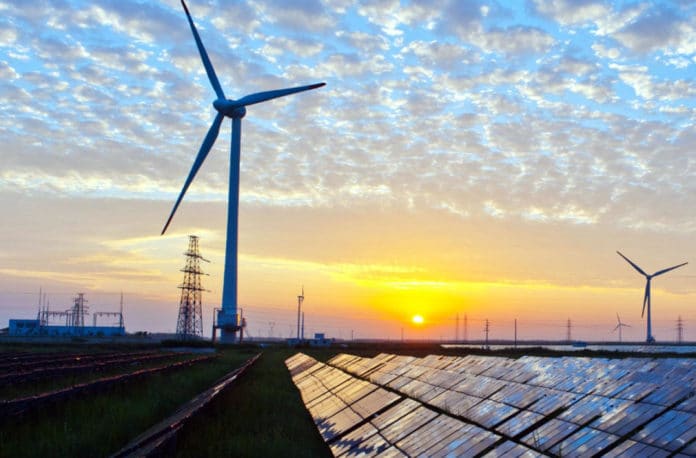For some, visions of a future powered by clean, renewable energy are clouded by fears of blackouts driven by intermittent electricity supplies. Those fears are misplaced, according to a new Stanford University study that analyzes grid stability under multiple scenarios in which wind, water, and solar energy resources power 100% of U.S. energy needs for all purposes.
According to the researchers, the energy system running on wind, water, and solar coupled with storage avoids blackouts, lowers energy requirements and consumer costs while also creating millions of jobs, improving people’s health, and reducing land requirements.
The study analyzed grid stability across all 50 U.S. states and districts for 2050-51, following a sector-wide transition to 100% renewable electricity and heat, the deployment of battery storage, and demand response. As a result, it found that no blackouts occurred, even during summer in California or winter in Texas.
Stanford researchers looked at how we can meet continuous energy demand every 30 seconds for two years. They ran simulations for six individual states – Alaska and Hawaii, both of which are geographically isolated, as well as California, Texas, New York, and Florida.
Their scenarios envisioned a massive scaling up of offshore wind turbines and rooftop solar panels as well as onshore wind turbines, utility solar panels, and concentrated solar power plants. The researchers found that new electricity generators would take up about 0.84% of U.S. land compared to the approximately 1.3% of land currently occupied by the fossil fuel industry.
The researchers’ simulations suggested that blackouts in California and Texas could be avoided at low cost due to a clean, renewable grid. Moreover, they found that per capita household annual energy costs were nearly 63% less than in a business as usual scenario. In some states, costs dropped as much as 79%. The investment cost to transition everything in the U.S. And the best part is that long-duration batteries were neither needed nor helpful for keeping the grid stable. Instead, grid stability could be obtained by linking together currently available batteries with storage of four hours or less.
The study also finds that building and operating a completely clean, renewable grid may create about 4.7 million long-term, full-time jobs across various energy sectors. In addition, the cleaner air would spare about 53,200 people per year from pollution-related deaths and millions more from pollution-related illnesses in 2050, saving about $700 billion per year in health costs, the researchers found.
“There is so much to be gained if we can gather the willpower to undertake the transition at a pace fitting the urgency of reaching a zero-carbon system,” said study coauthor Anna-Katharina von Krauland, a Ph.D. student in civil and environmental engineering at Stanford. “I suspect that these ideas, which might sound radical now, will soon become obvious in hindsight.”
